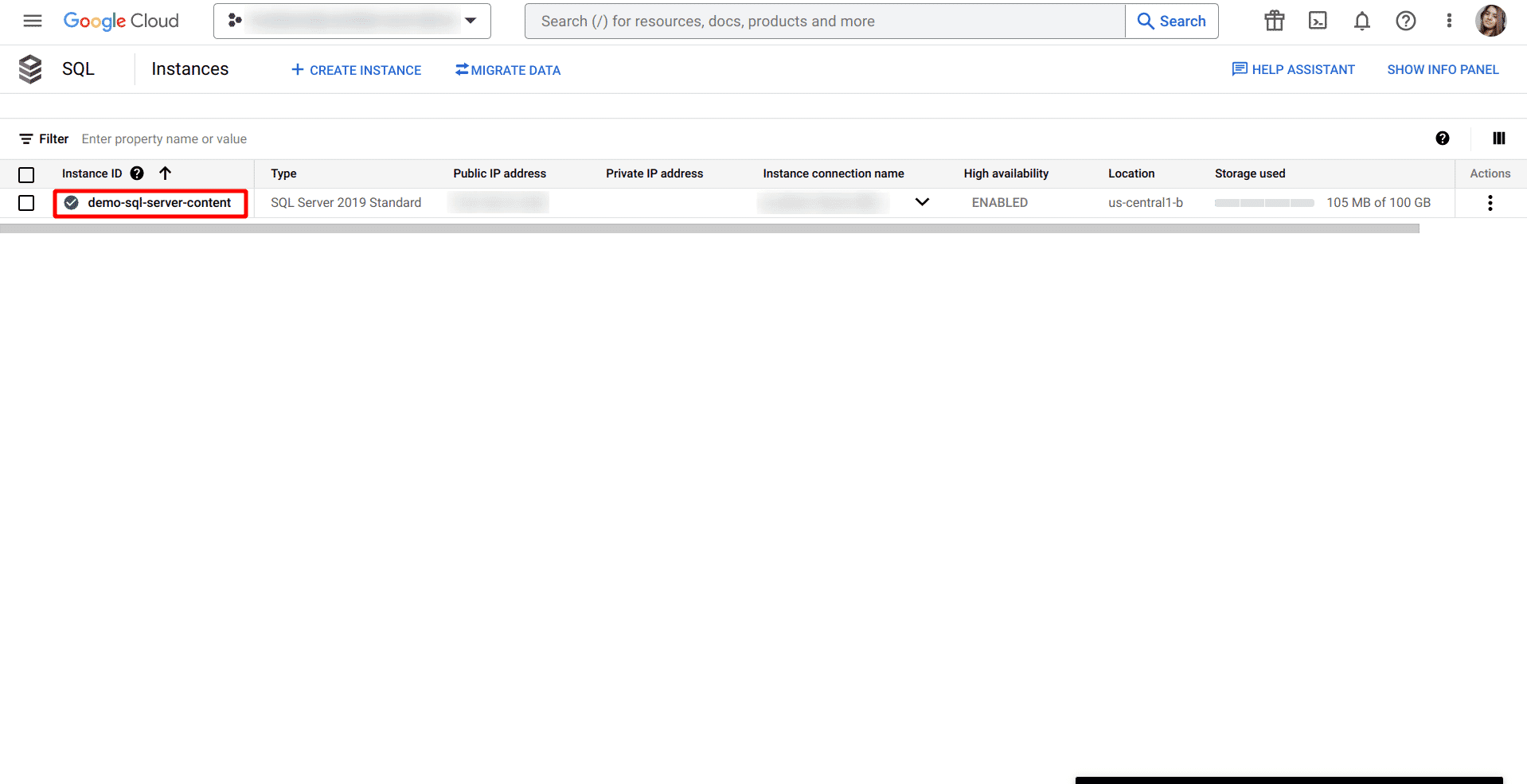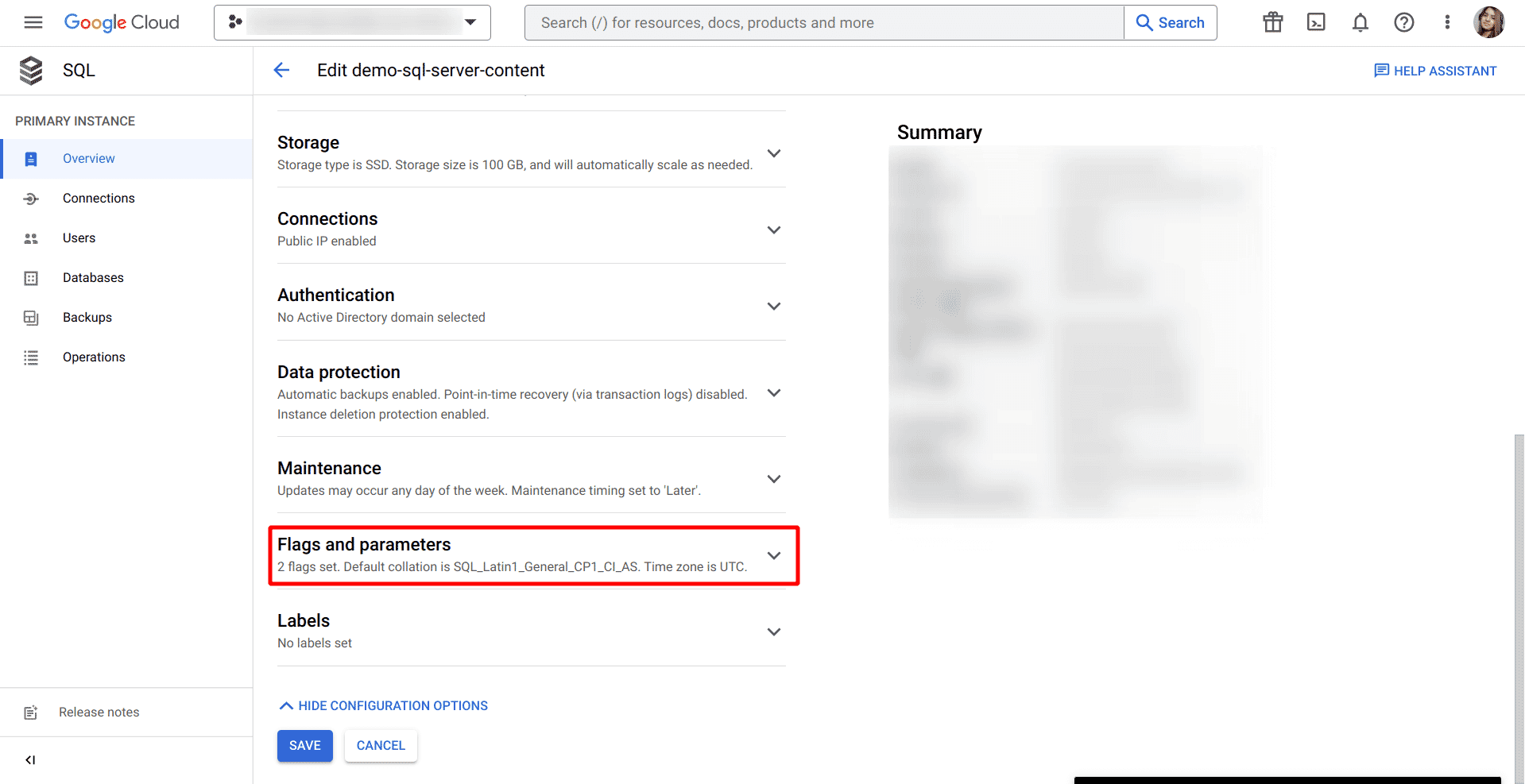Introduction
The cross db ownership for chaining option is used to configure cross-database ownership chaining for an instance of Microsoft SQL Server. This server option allows you to control cross-database ownership chaining at the database level or to allow cross-database
ownership chaining for all databases essentially this is a security feature of SQL Server that allows users of databases access to other databases besides the one they are currently using.
Enabling cross db ownership is not recommended unless all of the databases hosted by the instance of SQL Server must participate in cross-database ownership chaining.
Steps to disable the “cross db ownership chaining” flag using Google Cloud UI
-
Login to GCP and navigate to the Cloud SQL Instances page in the Google Cloud Console by visiting https://console.cloud.google.com/sql/instances
-
Select the SQL Server for which you want to configure the database flag

-
Click on Edit button

-
Scroll down to the Flags and parameters section

-
To set a flag that has not been set on the instance before, click Add Flag, choose the flag cross db ownership chaining from the drop-down menu, and set its value to off

-
Click on Save button

-
Confirm the changes under Database flags and parameters under Configuration section on the Overview page


Riyaz Walikar
Founder & Chief of R&D
Riyaz is the founder and Chief of R&D at Kloudle, where he hunts for cloud misconfigurations so developers don’t have to. With over 15 years of experience breaking into systems, he’s led offensive security at PwC and product security across APAC for Citrix. Riyaz created the Kubernetes security testing methodology at Appsecco, blending frameworks like MITRE ATT&CK, OWASP, and PTES. He’s passionate about teaching people how to hack—and how to stay secure.

Riyaz Walikar
Founder & Chief of R&D
Riyaz is the founder and Chief of R&D at Kloudle, where he hunts for cloud misconfigurations so developers don’t have to. With over 15 years of experience breaking into systems, he’s led offensive security at PwC and product security across APAC for Citrix. Riyaz created the Kubernetes security testing methodology at Appsecco, blending frameworks like MITRE ATT&CK, OWASP, and PTES. He’s passionate about teaching people how to hack—and how to stay secure.